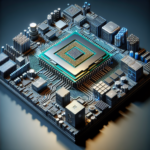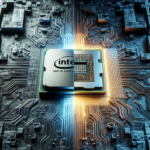Understanding CPU Virtualization and Its Applications

Understanding CPU Virtualization and Its Applications
In the modern era of computing, virtualization has become a cornerstone technology that enables efficient resource utilization, scalability, and flexibility. Among the various types of virtualization, CPU virtualization stands out as a critical component that allows multiple operating systems to run concurrently on a single physical machine. This article delves into the intricacies of CPU virtualization, its underlying mechanisms, and its wide-ranging applications.
What is CPU Virtualization?
CPU virtualization is a technology that allows a single physical CPU to act as if it were multiple separate CPUs. This is achieved by creating virtual instances of the CPU, each of which can run its own operating system and applications. The primary goal of CPU virtualization is to maximize the utilization of physical hardware resources, thereby improving efficiency and reducing costs.
How CPU Virtualization Works
At its core, CPU virtualization involves the creation of virtual machines (VMs) that share the physical CPU resources. This is accomplished through a combination of hardware and software techniques. The key components involved in CPU virtualization include:
- Hypervisor: Also known as a virtual machine monitor (VMM), the hypervisor is a software layer that sits between the physical hardware and the virtual machines. It manages the allocation of CPU resources to each VM and ensures isolation between them.
- Virtual CPUs (vCPUs): Each VM is assigned one or more virtual CPUs, which are essentially time-sliced portions of the physical CPU. The hypervisor schedules these vCPUs to run on the physical CPU, giving the illusion of multiple independent processors.
- Hardware-Assisted Virtualization: Modern CPUs include features such as Intel VT-x and AMD-V that provide hardware support for virtualization. These features enhance the performance and security of virtualized environments by offloading certain tasks from the hypervisor to the CPU.
Types of CPU Virtualization
There are several types of CPU virtualization, each with its own characteristics and use cases:
- Full Virtualization: In full virtualization, the hypervisor provides a complete emulation of the underlying hardware, allowing unmodified guest operating systems to run in VMs. This approach offers maximum compatibility but may incur performance overhead.
- Paravirtualization: Paravirtualization involves modifying the guest operating system to be aware of the virtualized environment. This allows for more efficient communication between the guest OS and the hypervisor, resulting in better performance.
- Hardware-Assisted Virtualization: As mentioned earlier, this type leverages hardware features to improve the efficiency and security of virtualization. It is commonly used in conjunction with full or paravirtualization.
Applications of CPU Virtualization
CPU virtualization has a wide range of applications across various domains. Some of the most notable applications include:
Server Consolidation
One of the primary applications of CPU virtualization is server consolidation. By running multiple virtual machines on a single physical server, organizations can reduce the number of physical servers required, leading to significant cost savings in terms of hardware, power, and cooling. This also simplifies management and improves resource utilization.
Cloud Computing
Cloud computing relies heavily on virtualization technologies to provide scalable and flexible computing resources. CPU virtualization enables cloud service providers to offer virtual machines to customers on a pay-as-you-go basis. This allows customers to scale their computing resources up or down based on demand, without the need for significant upfront investments in hardware.
Development and Testing
Virtual machines provide an ideal environment for software development and testing. Developers can create multiple VMs with different configurations to test their applications in various scenarios. This helps identify and fix issues early in the development process, leading to more robust and reliable software.
Disaster Recovery
CPU virtualization plays a crucial role in disaster recovery strategies. By creating virtual machine snapshots and replicating them to remote locations, organizations can ensure business continuity in the event of hardware failures or other disasters. Virtual machines can be quickly restored and brought online, minimizing downtime and data loss.
Desktop Virtualization
Desktop virtualization, also known as Virtual Desktop Infrastructure (VDI), allows users to access their desktop environments from any device with an internet connection. This is particularly useful for remote work and bring-your-own-device (BYOD) scenarios. CPU virtualization enables the creation of virtual desktops that run on centralized servers, providing a consistent and secure user experience.
Challenges and Considerations
While CPU virtualization offers numerous benefits, it also comes with its own set of challenges and considerations:
Performance Overhead
Virtualization introduces some level of performance overhead due to the additional layer of abstraction provided by the hypervisor. Although hardware-assisted virtualization has mitigated this to a large extent, it is still important to carefully plan and allocate resources to ensure optimal performance.
Security Concerns
Virtualized environments can be vulnerable to security threats such as hypervisor attacks and VM escape. It is essential to implement robust security measures, including regular patching, network segmentation, and access controls, to protect virtual machines and the underlying infrastructure.
Licensing and Compliance
Licensing and compliance can be complex in virtualized environments, especially when dealing with software that has specific licensing requirements. Organizations must ensure that they comply with licensing agreements and regulatory requirements to avoid legal and financial repercussions.
Future Trends in CPU Virtualization
As technology continues to evolve, several trends are shaping the future of CPU virtualization:
Edge Computing
Edge computing involves processing data closer to the source, rather than relying on centralized data centers. CPU virtualization is playing a key role in enabling edge computing by allowing lightweight virtual machines to run on edge devices, providing low-latency processing and real-time analytics.
Containerization
Containers are lightweight, portable units that package applications and their dependencies. While containers are often seen as an alternative to traditional virtualization, they can also complement it. CPU virtualization can provide the underlying infrastructure for running containers, offering a flexible and scalable solution for modern application deployment.
Artificial Intelligence and Machine Learning
Artificial intelligence (AI) and machine learning (ML) workloads require significant computational resources. CPU virtualization can help optimize resource allocation and improve the efficiency of AI and ML workloads by enabling dynamic scaling and resource sharing.
FAQ
What is the difference between CPU virtualization and other types of virtualization?
CPU virtualization specifically refers to the creation of virtual CPUs that share the physical CPU resources. Other types of virtualization include memory virtualization, storage virtualization, and network virtualization, each of which focuses on virtualizing different aspects of the computing environment.
Can CPU virtualization improve the performance of my applications?
CPU virtualization can improve resource utilization and provide better scalability, but it may also introduce some performance overhead. The impact on performance depends on various factors, including the type of virtualization used, the workload, and the underlying hardware.
Is CPU virtualization secure?
While CPU virtualization can introduce security risks, such as hypervisor attacks and VM escape, implementing robust security measures can mitigate these risks. Regular patching, network segmentation, and access controls are essential for maintaining a secure virtualized environment.
How does hardware-assisted virtualization improve CPU virtualization?
Hardware-assisted virtualization features, such as Intel VT-x and AMD-V, offload certain tasks from the hypervisor to the CPU, improving the efficiency and security of virtualized environments. These features reduce the performance overhead associated with virtualization and enhance isolation between virtual machines.
What are the benefits of using CPU virtualization in cloud computing?
CPU virtualization enables cloud service providers to offer scalable and flexible computing resources on a pay-as-you-go basis. This allows customers to scale their resources based on demand, without significant upfront investments in hardware. It also simplifies management and improves resource utilization.
Conclusion
CPU virtualization is a powerful technology that has revolutionized the way we utilize computing resources. By enabling multiple operating systems to run concurrently on a single physical machine, it offers numerous benefits, including improved resource utilization, cost savings, and enhanced flexibility. From server consolidation and cloud computing to development and testing, CPU virtualization has a wide range of applications that continue to drive innovation in the IT industry. As technology evolves, trends such as edge computing, containerization, and AI/ML workloads will further shape the future of CPU virtualization, making it an indispensable tool for modern computing environments.




